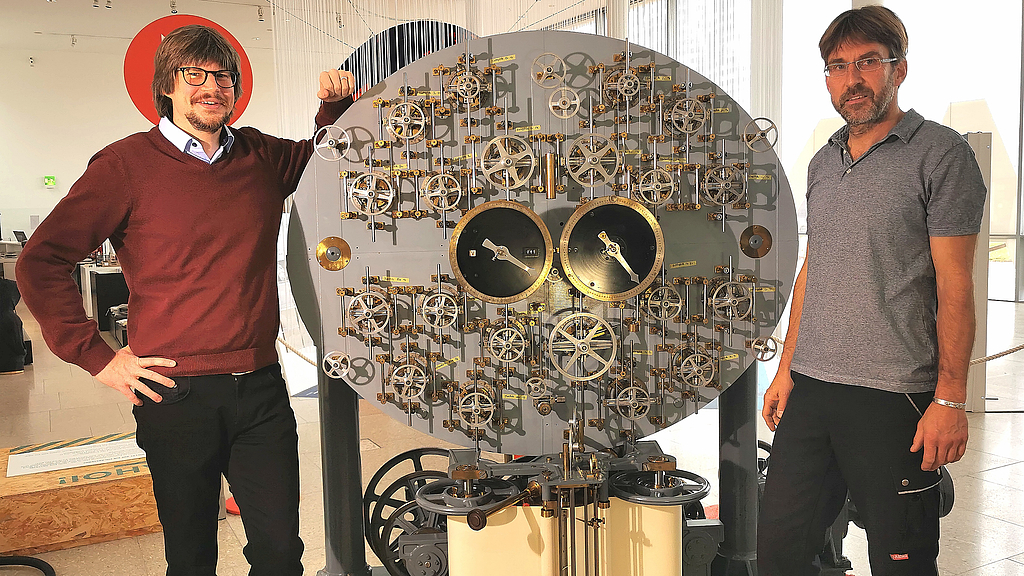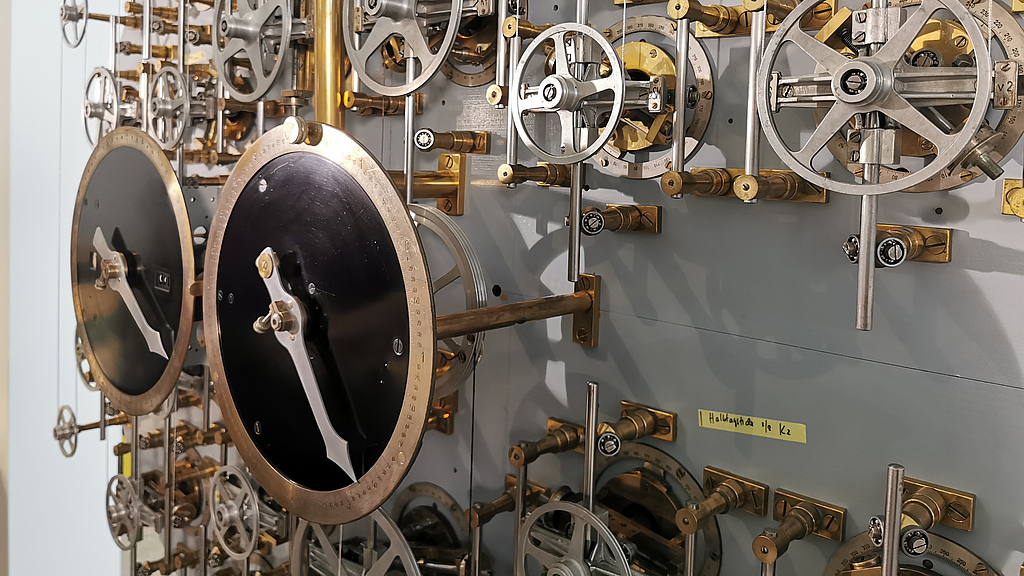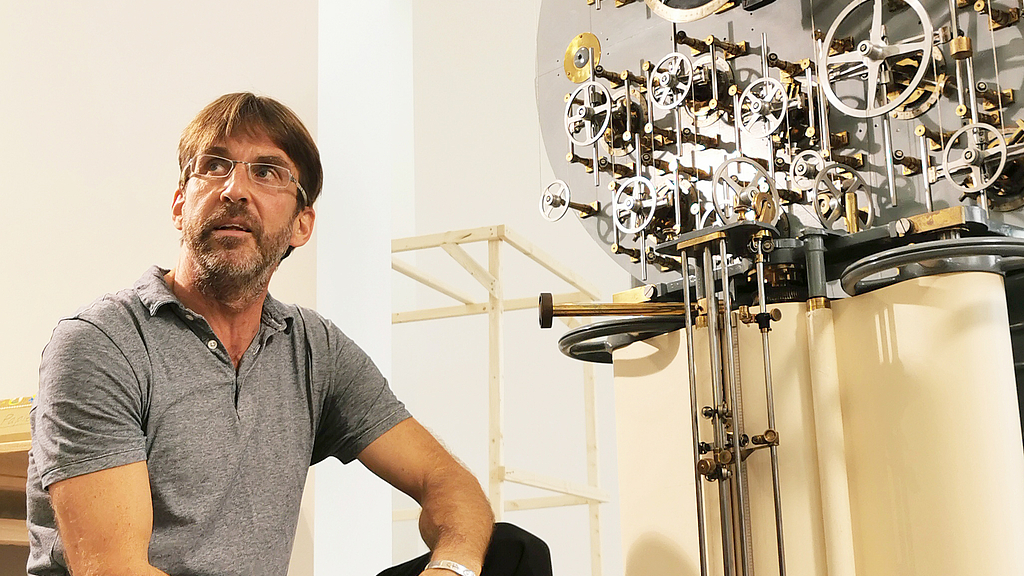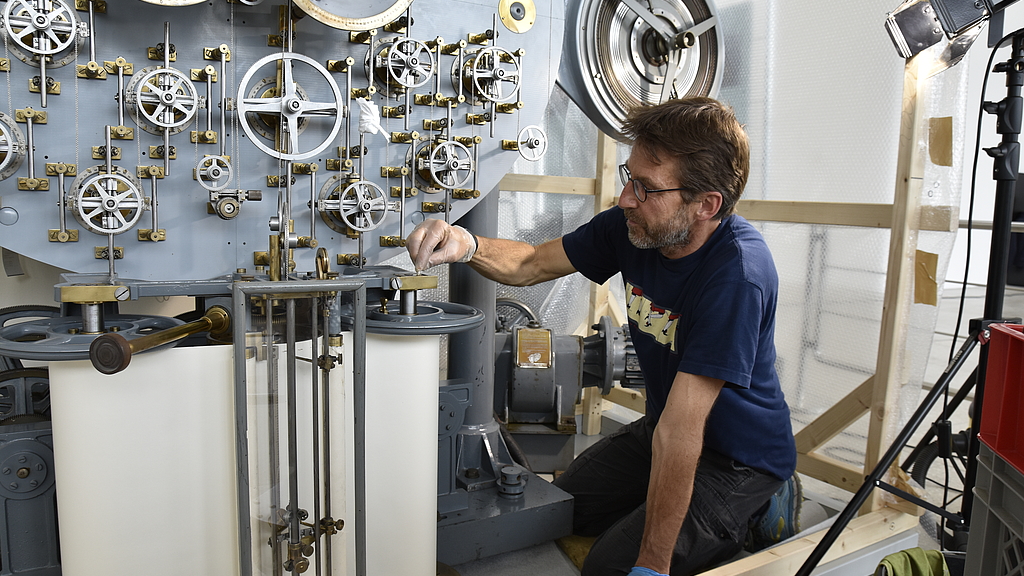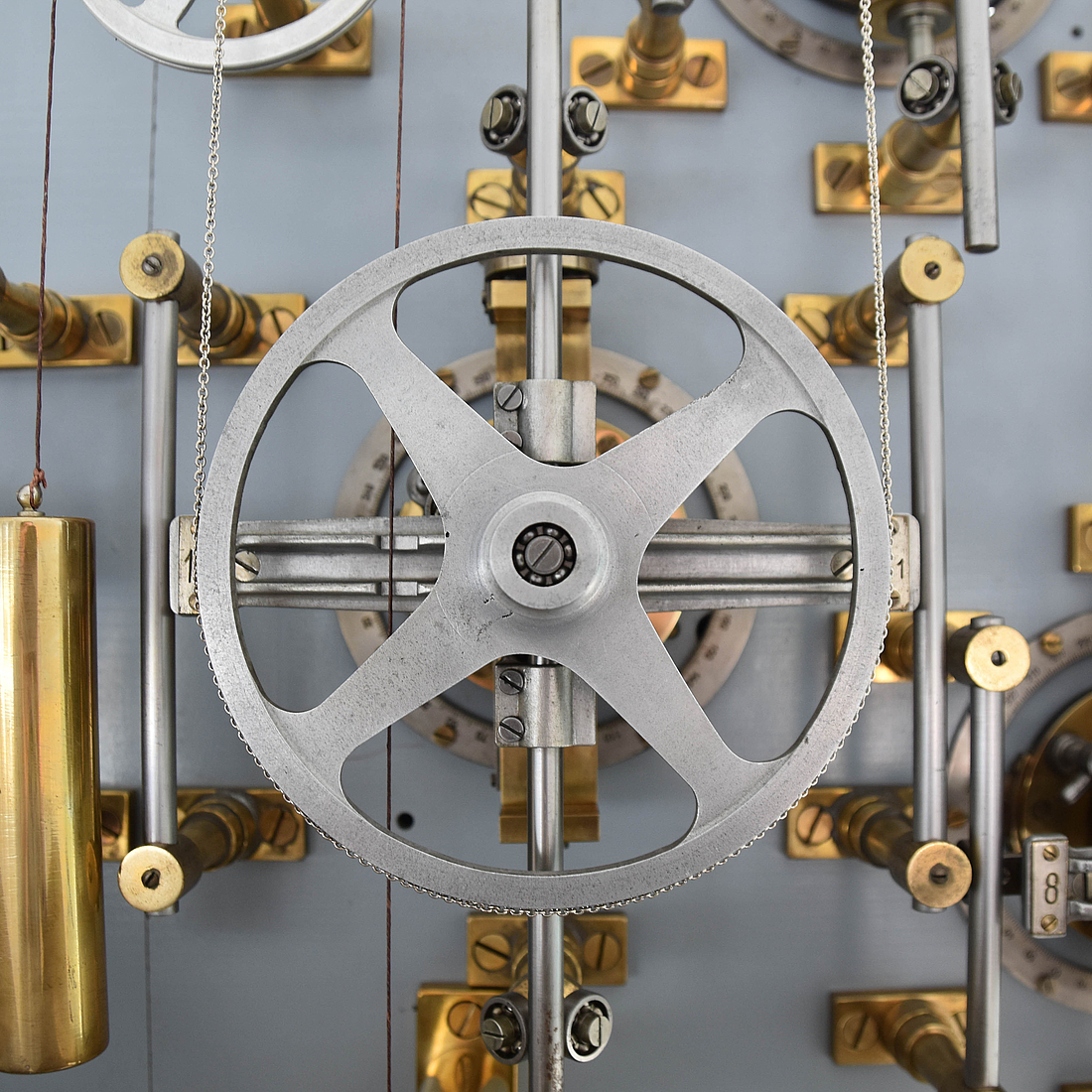First German tidal computer goes into operation
The restoration of Germany's first tidal calculator has been completed. Thanks to state-of-the-art methodology, the 105-year-old masterpiece of mechanics from the imperial era is working again and will be put into regular public operation.
It is an exhibit of superlatives - the tide computer: it is the oldest of its kind in Germany and can equally be described as one of the first analogue computers. Only three stationary tide computers were ever manufactured in Germany. In total, less than thirty were ever built worldwide over a period of almost 100 years. Of those that have survived, only a few are publicly accessible. The DSM is all the more pleased that two of these treasures belong to the collection - the model from 1915 and another from the GDR.
With its many gears and circular tidal gears, the tide calculator stands out as an imposing sight among the other objects in the SEA CHANGES exhibition. The silver and brass components suggest a long history. But it is not only the visual appearance that is a highlight; the elaborate method that restorer Tim Lücke used for the first time also fits into the "special" category. Lücke, who began work in May 2019, resorted to dry ice blasting to clean the interior of the device. It is a gentle and at the same time time time-saving method that has rarely been used in restoration. With the help of pellets of frozen carbon dioxide, even the smallest parts inside the machine could be cleaned without the need for major disassembly of the gearbox. For this purpose, the machine had to be brought outside the museum for a short time. Interested museum guests could look over Tim Lücke's shoulder during the work process in the exhibition hall. A film available online documents the restoration in the museum in fast motion.
"Because this is a method that has rarely been used so far, the project is also very exciting from a restoration perspective. We are glad that we found an experienced expert in Tim Lücke, who applied dry ice cleaning in this form for the first time at the DSM," says Martin Weiss, research associate at the DSM. In future, the tidal computer will be put into operation regularly to prevent the gears from gumming up again. In the coming year, this will also happen in public under the eyes of the public. A display case specially commissioned for this purpose, behind which the demonstrations will take place in perspective, will be made by the beginning of next year.
The restoration was made possible by generous support from the Kulturstiftung der Länder, the Deutsches Stiftungszentrum, the Förderverein Deutsches Schifffahrtsmuseum e.V. and private donors.
History of the Tide Calculator
When steamships appeared in the 19th century, making sailing times much less dependent on the weather, it became essential to be able to accurately predict water levels in ports. The Englishman William Thomson, later known as Lord Kelvin, constructed the prototype of a tide calculator in 1872. In the following decades, the basic principle was never changed, but optimised. When the First World War began, German hydrographers were forced to build the first model of their own, which went into operation in 1915 at the Naval Observatory in Wilhelmshaven.
After this prototype was equipped with an electric printing mechanism in the 1930s, it presumably made its way to Greifswald during the Second World War and from there to the German Hydrographic Institute in Hamburg. In 1975, it was handed over to the then newly founded German Maritime Museum in Bremerhaven, where it has been on display ever since - and now, for the first time, in operation.

